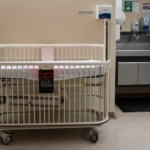Osteoarthritis of the knee FAQs
What causes OA?
Factors that may lead to OA include: weight gain, advancing age and joint injury.
What is OA of the knee?
The knee joint includes the patella (kneecap), the femur (thigh bone) and the tibia (shinbone). These bones are separated by cartilage, a white, elastic material that covers the contact points. Healthy cartilage acts as a ‘cushion’ absorbing shock between the three bones that make up the knee joint. When you lose cartilage in the knee, the bones in the joint become more exposed and rub together resulting in pain, stiffness, swelling, deformities such as knock-knee or bow-leg and can also cause a crunching noise.
How is OA of the knee diagnosed?
A combination of radiographs, magnetic resonance imaging and physical examination may be used to detect eroded cartilage, osteophytes, narrowed joint spaces, bone cysts, inflamed synovium and pannus associated with osteoarthritis.
What non-surgical treatments are available to manage pain and improve knee function?
Non-surgical treatments include:
- Regular exercise including low-impact activities such as cycling, swimming and strength training to maintain range of motion
- Weight management
- Analgesics to relieve pain (e.g. Acetaminophen™, Tylenol™)
- Anti-inflammatory medications to relieve swelling:
- Non-steroidal anti-inflammatory drugs (e.g. Advil™, Aspirin™)
- Cycloxygenase or COX Inhibitors (e.g. Celebrex™)
- Injections (Synvisc™, Cortisone™)
- Physiotherapy
- Walking Aids<
- Osteoarthritis Knee Brace to off-load the joint
- Massage to relieve other joints carrying a disproportionate load to compensate for the weak joint
- Nutritional supplements including Glucosamine Chondroitin Sulfate™ to relieve pain
What is a knee replacement surgery?
Knee replacement surgery involves cutting, cleaning, reshaping and resurfacing of some or all of the joint surfaces of the knee bones in preparation for the installation of a prosthetic knee. A prosthetic knee consists of three components: femoral, tibial and patellar. The amount of surgery depends on the condition of the joint surfaces. Knee replacement may be compared to a dental crown where a tooth-shaped ‘cap’ is placed over a tooth to restore its shape and size.
What is the difference between a partial and a total knee replacement?
A partial knee replacement involves one surface or compartment of the joint (i.e., lateral or medial) while a total knee replacement involves all the joint surfaces.
Who determines whether I am a candidate for a partial or total knee replacement?
Your Family Physician may refer you to an Orthopaedic Surgeon for a surgical assessment; it is the Orthopaedic Surgeon who makes the final decision.
How does the Orthopaedic Surgeon determine whether to do a partial or a total knee replacement?
Your Orthopaedic Surgeon determines the most appropriate procedure based on a review and assessment of your history and x-rays showing the location and extent of damage to the joint surfaces together with their knowledge of current research and experience with various products.
I live in Alberta. How do I get a referral from my Family Physician to an Orthopaedic Surgeon?
Your Family Physician completes a Referral form and submits it along with your x-rays to the Alberta Bone and Joint Health Institute.
Any tips for completing the Referral to help expedite the process?
Ensure your Family Physician selects Next Available Surgeon on the Referral and you and your Family Physician have reviewed and considered all possible Non-Surgical Treatments Attempted listed in the Referral including Osteoarthritis (OA) Knee Braces.
How does an OA Knee Brace help?
Osteoarthritis (OA) is a degenerative joint disease characterized by breakdown of the cartilage in the joint that cushions the bones of the knee. An OA Knee Brace mechanically unloads the joint surfaces to reduce pain.
Do I need a prescription for an OA Knee Brace?
Yes. Private and public health insurers both require copies of prescriptions to be submitted with claims for reimbursement. Ask your Family Physician for a prescription.
Is the cost of an OA Knee Brace covered by public health insurance?
The cost may be partially or fully covered by Alberta Aids to Daily Living, AADL. According to AADL, patients are responsible for 25 percent of the cost of the benefit up to a maximum of $500.00 per family per year. Seniors aged 65 and over are automatically cost-share exempt. Your Orthotist can determine your eligibility for benefits with AADL.
How much does an OA Knee Brace cost?
The maximum price for an OA Knee Brace under Alberta Aids to Daily Living ranges from $754.36 for a custom-fit product to $2,213.07 for a custom-made product.
What type of OA Knee Brace do you recommend?
Your Orthotist will review all the products available with you, present you with your options and help you to choose the one that best meets your particular needs.
How do I ensure that the Family Physician’s Referral is accurate, complete and has actually been submitted to the Alberta Bone and Joint Institute?
Contact your Family Physician’s office and follow-up directly with the staff to review your file and confirm the details including processing dates and timelines.
Can I request a specific surgeon?
Yes. Be aware that requesting a specific surgeon will lengthen your waiting time significantly. It may take up to 2 years to get an appointment for a consultation with a specific surgeon let alone schedule surgery following your consultation.
I’ve been referred to an Orthopaedic Surgeon practicing in a different city in Alberta than the one I live in. I understand he may have a short waiting list. Should I consider trying to see that surgeon?
First, do an online search to confirm his specific experience with joint replacements. For example, you may discover that the surgeon has more experience in knee ligament reconstructions and is only trialing joint replacements.
Second, be aware of the lower cost and greater convenience of having the surgery performed in your city of residence close to family and friends for support. Third, be aware of the higher cost and greater inconvenience of attending a series of pre- and post-op appointments in a different city.
What can I expect during my hospital stay?
Here's What to Expect according to Alberta Health Services. Visit the Total Knee Replacement: What to Expect at the Hospital and Knee Replacement Surgery pages.
Visit the Alberta Bone & Joint Institute for News and patient stories in Community Focus: The Bone & Joint Impact.
I’m considering delaying surgery. Will this have any impact on the outcome?
Yes. The functional level you go into the surgery with is generally the functional level you can expect to come out of it. So, further deterioration in your condition due to delays will result in poorer outcomes. The lesson is: do not delay the surgery or your level of satisfaction with the outcome may decline.
I have a date for surgery. Is there anything I can do to speed up the process?
Yes. As soon as you have a date for surgery confirmed, call the Orthopaedic Surgeon’s office to inform them that you’re available on short-notice via cell phone in the event of a cancellation.
What is the minimum amount of notice I will require in the event that I do get offered an earlier surgery date due to a cancellation?
You may need up to a month to attend to the standard series of pre-operative appointments including: Lab tests, Dental appointments, Specialist appointments and Patient Education Seminar.
How much support will I need at home post-op?
Rates of recovery from surgery vary widely from patient-to-patient. It’s much better to be conservative and overestimate the amount of support you will need at home to heal from the surgery, recover and rehabilitate, assuming no complications, than to get caught short without enough support and suffer a poorer outcome.
How soon can I expect to be back to my ‘old self’ following the surgery?
It may take up to 6 weeks.
What is it like to be the caregiver for a patient recovering from knee replacement surgery?
The first couple of weeks after surgery may be compared to the demands of caring for a newborn baby. The patient will need constant attention monitoring wound care, attending to pain management, exercises, medications, toileting, bathing, dressing, eating and drinking.
What is a typical day for a patient in recovery and rehabilitation like?
Your physiotherapist will provide a rehabilitation plan that may consist of up to 5 sets of exercises per day. A single set may take up to one hour to complete, including 20 minutes of ice, followed by a rest period. The more diligently you follow your prescribed daily regime of exercises, the better your outcome will be.
How painful is the surgery?
There are a couple of types of pain including incision pain and joint pain. You may notice immediate relief from the joint pain following the surgery because the source of the pain, Osteoarthritis, has been resolved with the joint replacement. That leaves the pain from the incision.
How do you manage the incision pain?
Pain tolerance is highly individual. Some people will require stronger medication administered more frequently for a longer period of time while others will require less. The key is to monitor your pain tolerance very closely to stay ahead of the pain. Be aware that once you fall behind and the pain gets away from you, it’s very difficult to get back on top of it again.
Will I be on any other medications?
Yes. You may have to self-administer daily injections of anti-clotting medication directly into your abdomen for 10 to 14 days following surgery.
Will I need rehabilitation following surgery?
Your surgeon may prescribe physiotherapy following recovery from surgery to help you gain function as measured by range-of-motion and muscle strength.
Is physiotherapy following knee replacement covered under public health insurance in Alberta?
Yes. Alberta Health provides for the initial assessment followed by up to 7 additional sessions.
Are 7 physiotherapy visits following knee replacement adequate?
Rehabilitation from knee replacement surgery is highly variable with some patients requiring more and others less. Depending on your personal expectations of your functional outcome and rate of progress, you may want to consider additional therapy to help you achieve your goals for full range-of-motion and strength.
How much does a physiotherapy session cost?
A single physiotherapy session may range from $65.00 to $85.00.
pathway-to-recovery-total-joint-replacement-HSS
Your Pathway to Recovery: A Patient’s Guide to Total Knee Replacement (TKR). This guidebook is an overview of how to prepare for total knee replacement surgery at HSS, and what to expect after surgery and during recovery. It is designed for patients who are already scheduled for a joint replacement at HSS, but is open for all to read. Read the guide in the viewer or download the PDF. Hospital for Special Surgery, New York.
11-2821-RR_HipKnee_Replacement_Toolkit_V3Hip & Knee Replacement Toolkit “A living document,” Editors: Dr. James P. Waddell, MD, FRCSC, Coordinator, National Action Network for the Bone and Joint Decade, Dr. Cy Frank, Executive Director, Alberta Bone and Joint Health Institute. Bone & Joint Canada Updated March 31, 2011
Policy_vol4_no4_Knowledge_TranslationRethinking how we replace knees and hips, Alberta Joint Health Institute. Healthcare Policy. 2009 May;4(4):52-6. Full text






